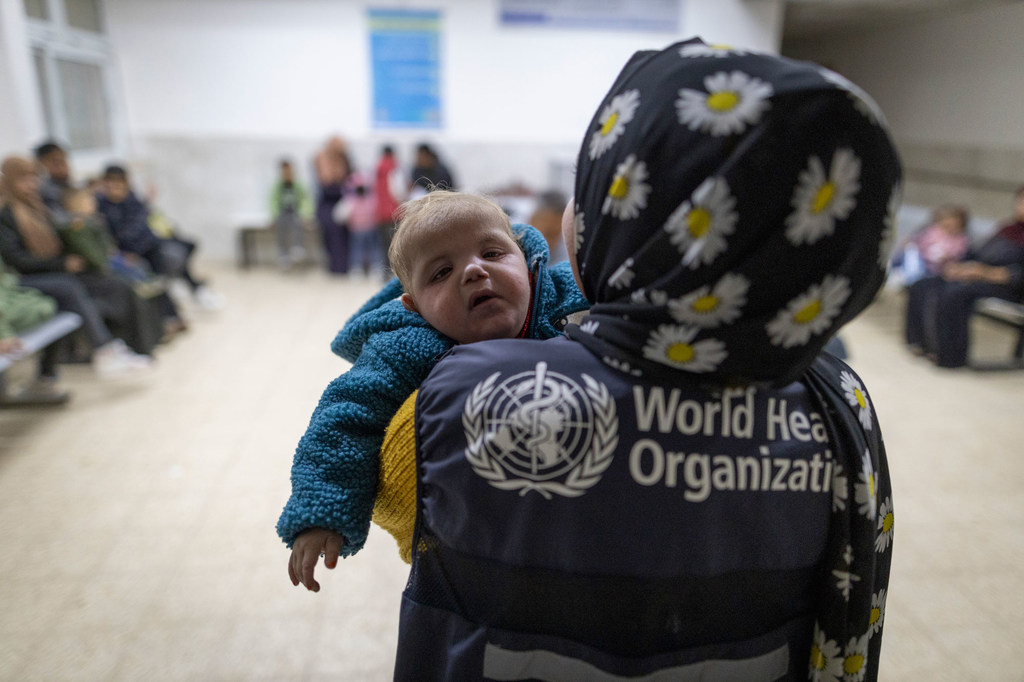RAMALLAH, June 4, 2025 (WAFA) – The Palestinian Central Bureau of Statistics (PCBS) and Environment Quality Authority said in a press release that this year, the World Environment Day comes as the Palestinian people continue to face an unprecedented environmental and humanitarian catastrophe, particularly in Gaza Strip, which has been suffering from the ongoing Israeli aggression since October 7th, 2023.
“Water and sewage networks are being torn apart, agricultural lands are being buried under contaminated explosives, toxins are spreading in the soil and air due to the use of internationally banned incendiary and phosphorus weapons, while coastal areas are being transformed into biodiversity graveyards due to the leakage of sewage and chemical waste into the Mediterranean Sea.”
This is not just "collateral damage" from aggression; it is a deliberate environmental crime aimed at turning Gaza Strip into a wasteland uninhabitable, with the potential radioactive contamination resulting from the bombing of industrial facilities and toxic emissions that will continue to destroy the health of future generations for decades, not only in Gaza Strip but also in the surrounding region, where the environmental catastrophe in Gaza Strip threatens the ecosystem of the entire Eastern Mediterranean, said the release.
“What Israel is committing is a double genocide: for humans and nature, something unpreceded historically that places the international community before a fateful test to hold accountable those who transform the environment into a weapon of war in violation of all international conventions, from the Geneva Conventions to the Principles of International Environmental Law.”
Lost water security: 65% of Gaza Population Receives Less than 3–5 Liters/Person/Day for Drinking and Cooking
Palestine relies primarily on water extracted from groundwater and surface sources, accounting for 73.1% of the total available water. The main reason for the limited use of surface water is the control of the Israeli occupation over the Jordan River.
Due to the ongoing Israeli aggression against Gaza Strip since October 7th, 2023, 91% of households in Gaza Strip suffer from water insecurity. 65% of the population in Gaza receives 3–5 liters/person/day for drinking and cooking, while only 35% of the population receives less than 15 liters/person/day for drinking, cooking, and basic hygiene[ii] (which is less than the minimum humanitarian requirement in emergency situations, according to World Health Organization).
The aggression also destroyed or damaged more than 80% of water stations and 330,000 linear meters of water networks.
Gaza Strip has witnessed a catastrophic collapse in sanitation services due to the widespread destruction of infrastructure since October 7th, 2023.
More than 85% of the water and sanitation infrastructure across Gaza Strip has been partially or completely destroyed, including all six major wastewater treatment plants.
The release said that 85% of wastewater pumping stations (73 out of 84) and their networks, as well as more than 650,000 linear meters of sewage networks, have also been destroyed. Some have been repaired but urgently require fuel to operate them. This has led to an almost complete paralysis of the sanitation system and has caused untreated wastewater to flow into the surrounding environment.
Destruction in the West Bank
Since the beginning of 2025, the Israeli occupation has escalated its operations in the northern West Bank, particularly in the Palestinian refugee camps. In Jenin Governorate, the aggression caused significant damage to infrastructure. According to international reports, more than 3.3 km of sewage networks and 21.4 km of water pipes were damaged.
In Tulkarm Governorate, damage was recorded, including the destruction of 8.4 km of sewage and rainwater drainage networks, in addition to 15 km of water lines, in Tulkarm and Nur Shams refugee camps.
In Tubas Governorate, damage affected more than 4 km of water and sanitation infrastructure.
The destruction of sewage and drainage infrastructure leads to the spread of wastewater and its seepage into the ground, with more than 78% of the population of Gaza Strip exposed to sanitation-related health risks due to rodents and pests in the absence of basic services and deteriorating sanitary conditions.
Collapse of Waste Management and Toxic Exposure
Gaza Strip is suffering from a serious environmental disaster due to the accumulation of more than half a million tons of solid waste in light of the almost total collapse of the waste management system due to the ongoing Israeli aggression. Most waste collection vehicles have been destroyed and roads damaged, hindering municipal crews from reaching the main landfills. They have been forced to establish temporary landfills near residential areas, causing air pollution, the spread of skin and respiratory diseases, and the proliferation of insects and rodents. In addition, waste decomposition and the emission of toxic gases expose more than 42% of the population to health risks from this waste.
Environmental degradation was not limited to solid waste alone, but also extended to the massive amount of rubble and debris resulting from the total or partial destruction of more than 173,000 buildings. The accumulated quantities are estimated at approximately 50 million tons of rubble, of which 2.3 million tons are mixed with hazardous waste such as asbestos, thousands of tons of hazardous and medical waste have accumulated, and more than 100,000 tons of explosives and bombs have been dumped, representing an unprecedented environmental and humanitarian challenge.
T.R.











